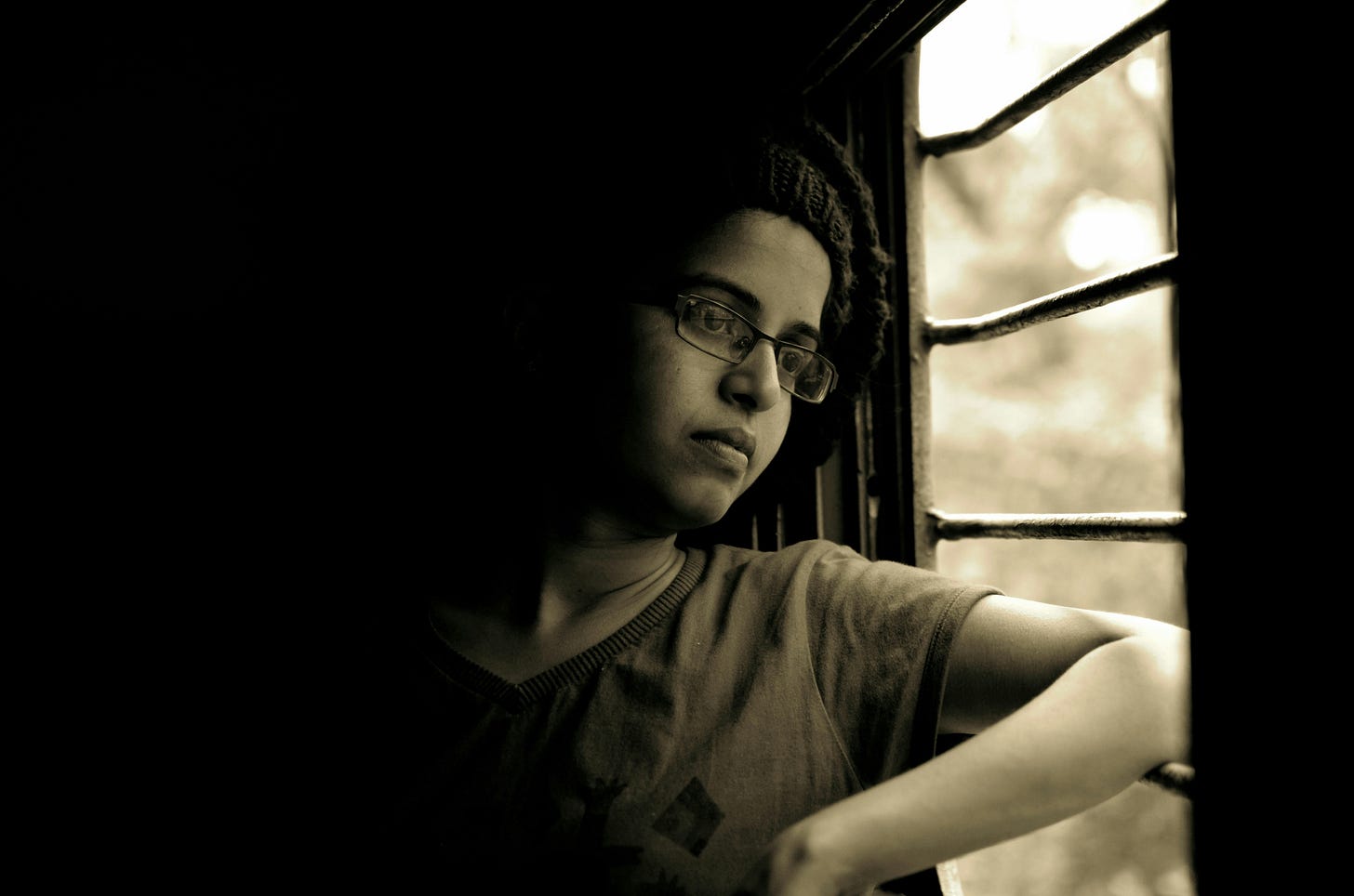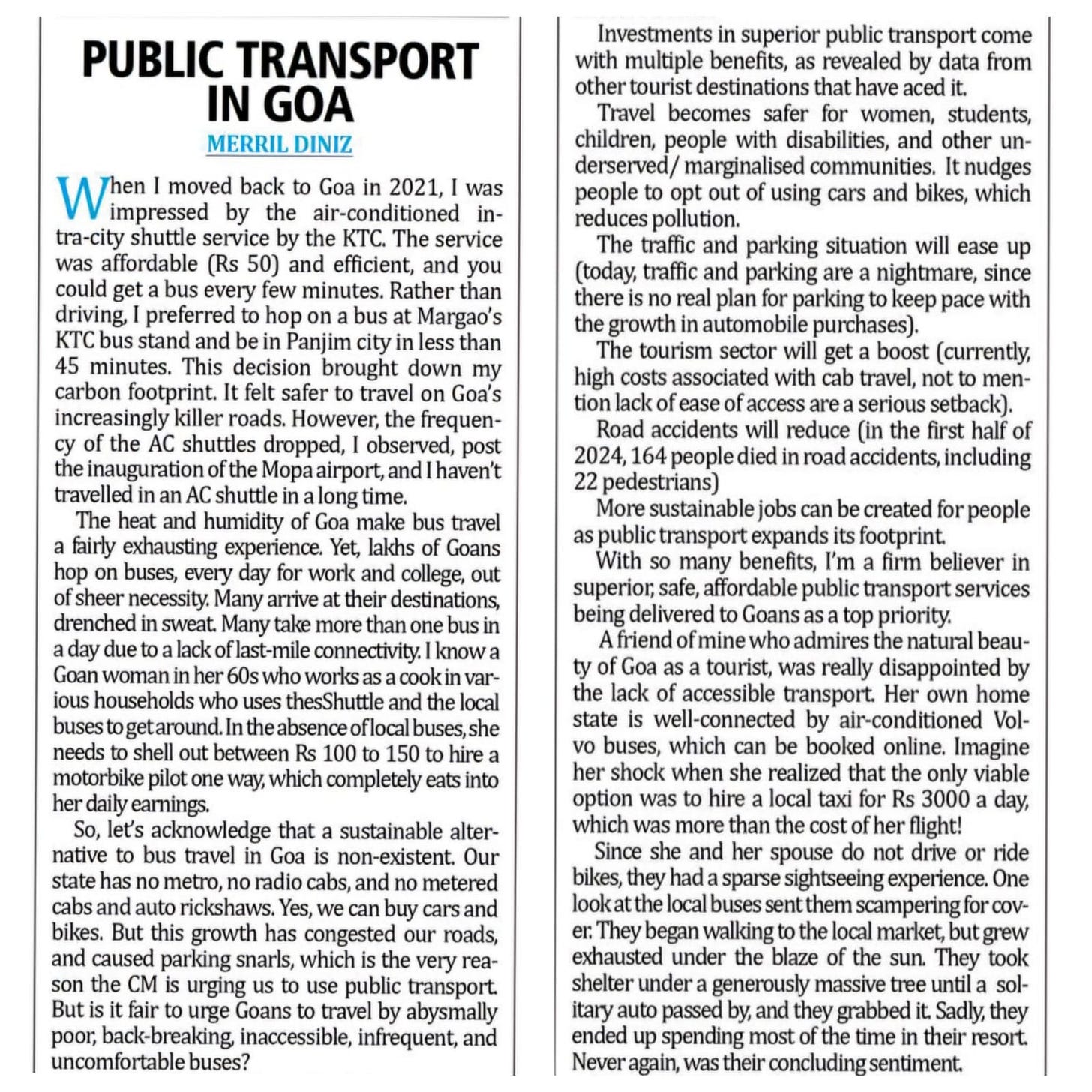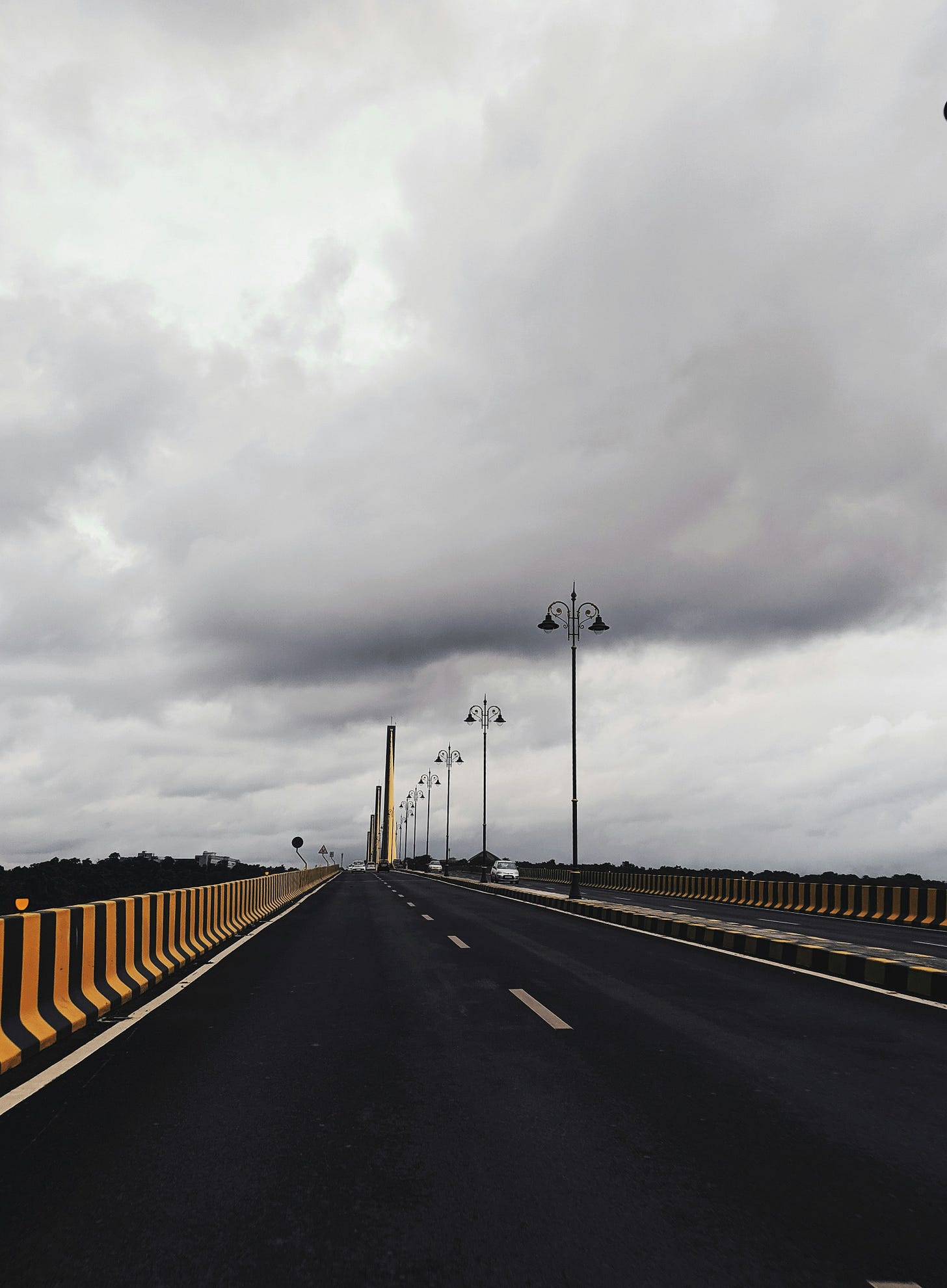How public transportation in Goa is holding women back
Real stories around work, relationships, and life.
A few weeks back, I wrote an editorial in OHeraldo, a local Goan newspaper about my views on public transportation in Goa. I outlined the challenges faced by locals and tourists, as well as the benefits of revamping the complete system. Interestingly, many Goan women began DMing me their personal stories around navigating daily travel. I was moved by some of their challenges and aspirations.
I concluded that the lack of accessible transport impacts women in three macro ways - livelihoods, relationships, and quality of life. Delving deeper under the surface I find it deeper psychological and financial consequences. Here’s a peek into how these three core themes play out.
PS: I’ve given my protagonists aliases to protect their identity *.
Cynthia* is a single woman in her 40s, living with her parents, in the outskirts of a town in North Goa. She is very caring towards her parents, especially, as they age. She has an ambitious streak, an enthusiasm for life, and her style is always on point. For years, she worked in Goa’s tourism sector. But during the pandemic, she lost her job.
She really misses that job, because her employer offered a pick-up and drop service, making it convenient and safe for her to travel. The pandemic was a harsh time for Goa’s tourism sector; with the arrival of AI, Cynthia’s hospitality job became redundant. She struggled to find employment in her field. She was ready to shift sectors, and began a frenzied job search. But transportation proved to be a major challenge.
She discovered that there were no direct buses to most offices, and the last-mile connectivity was non-existent. She could not find work for almost two years, during which she depleted her savings. She was starting to feel the pinch, financially, though her smile belies it. She stopped meeting friends, and going out, except to church. She postponed important purchases.
Eventually, she applied for a role at a store located at a 20-minute walking distance from her home. She interviewed and got the job. The pay is significantly less, and she works six days a week. As we can see, inaccessible public transport has limited her power of choice. It has diminished her job prospects and earning potential. But at the moment, she is just thankful that she can reach her job.
Yanika* is a 20-something young woman who runs a small home business in a small village in South Goa. She also enjoys dabbling in some side hustles. In fact, she is creative, talented, and bursting with ideas. She also loves attending concerts, and networking meet-ups.
But she forfeits most events, since they are hosted in the evenings. “How can I return home late, when I do not drive, and there are no buses to my village? “ she shares. And so, she mostly ends up attending events at her local church, or within the village. She is unable to explore the plethora of rich cultural events taking place in Goa, everyday - from book meets, and plays, to concerts and business networking opportunities.
She feels deprived from expanding her horizons, and a nagging resentment is growing within her - the kind that drives young people to move away to cities, leaving behind villages and towns of retirees.
Why does Yannika not drive or ride a bike?
One, she finds it scary to navigate the killer roads in Goa, made more dangerous by drunken tourists, and some locals, too.
Two, she has strong views about how the pollution in Goa is slowly rising, and she does not want to play a role in contributing to its flourishment.
So, for now, she is suffering in silence. But it is difficult to say how long she can keep up with this self-imposed exile from the external world. Goa is witnessing a mass exodus of youth in search of adventure and better opportunities in the city, or abroad, leaving behind a state of seniors.
Will Yannika join their ranks when it gets simply too hard? Only time will tell. In the mean time Goa is experiencing a kind of reverse-migration of non-Goan city-slickers making it their home.
Photo by Faris Mohammed on Unsplash
Dinah* is a 30-something mother of two school going girls. She left Goa as a toddler and grew up in Mumbai. Then she fell in love with her hubby, and moved back post marriage. She now resides with her children, hubby and mother-in-law.
When she first moved to Goa, she was attracted by the allure of our beautiful state. Additionally, her parents also moved back to their ancestral village. The prospect of seeing them often, excited her. However, the reality is quite different.
Dinah lives a good 45 minutes away (by car) from her parents. She must undertake a journey of changing three buses to visit them, which collectively means 90 minutes one way, if you consider waiting time, plus some amount of walking. This is a tough proposition as she is the primary caregiver for her MIL and children. Despite living in the same state, she visits her parents once a month, and is dependent on her hubby to transport her to see them, which he willingly does. But it is tough for him as he works six days in a week, despite his best intentions.
Like a typical Mumbaikar, Dinah thought she would be hopping onto trains and buses, or in and out of rickshaws and cabs, for the rest of her life. In Mumbai, learning to drive and managing a car, seemed unnecessary and a hassle. But the abysmal transport system of Goa jolted her out of her reverie. Only in retrospective, does she realise that good public transport is a privilege, one that she is denied in Goa.
In the early days of moving to Goa, Dinah would undertake the long trudge to see her parents. But these days she feels depleted of energy. She has a feeling that she is not in control of her life, desires, and goals. This state of being has impacted her relationship with herself. For instance, she experiences bouts of low self-esteem. It also pains her that she sees her parents just once or twice a month, for brief periods, and that they don’t get to see their granddaughters, too often.
Now, Cynthia, Yannika and Dinah, enjoy a certain degree of privilege. And people may say, why can’t they just learn how to drive, or ride a bike? Yes, they could. But each has their reasons for not doing so - a combination of fear of our killer roads, an inability to learn the driving skill, or lack of resources to afford a vehicle, plus foot the insurance and maintenance costs.
The bigger reality is that if everyone buys a car or bike, not only will the roads be congested, it will add to Goa’s parking nightmares, and pollution levels.
Chetan Bhagat recently penned an editorial on how tourism in Goa was declining. He wrote poignantly:
Goa is a crown jewel of Indian tourism. Watching it deteriorate and face public criticism is heartbreaking. We must fix Goa. We must make it a service-oriented, tourist-focused, fun destination for low- to high-end tourists. This is essential not only for Goa and Goans but also for India and all Indians.
-Chetan Bhagat
Today, our transport system is ambling along with no long-vision, or tender, loving care. Yes, the air-conditioned shuttles between major cities is a mark of some progress. But what about the villages where tax-payers need services?
Personally, as a Goan I believe public transportation deserves serious investments in planning and execution. It should be at the forefront of Government’s agenda, in lieu of so-called “development” projects that offer no value to Goan people (in fact they are disruptive).
We urgently need an eco-friendly, sustainable roadmap for public transportation to lay the foundation for improved quality of life, relationships, and livelihoods in Goa. Especially, for women, and furthermore for marginalised women.






